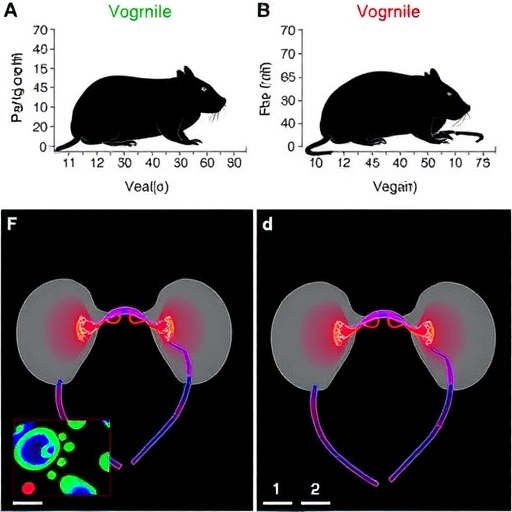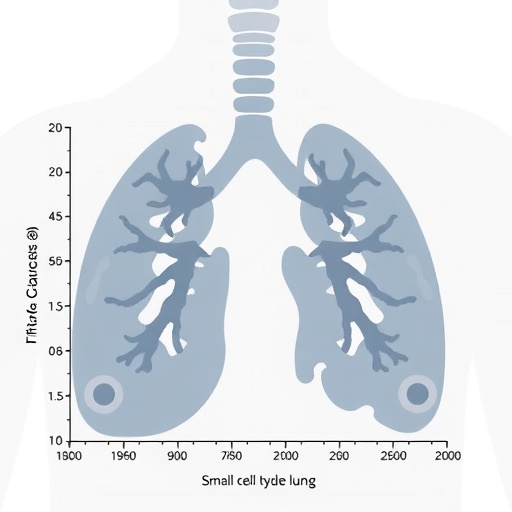In a landmark study that sheds light on the silent yet potent effects of chemical exposure on reproductive health, researchers have delved into the repercussions of pyriproxyfen exposure on female rats. Pyriproxyfen, a juvenile hormone analog commonly used in pest control, has been a subject of increasing scrutiny due to its potential implications on human health, particularly concerning reproductive functions. The investigation, led by a team of scientists, integrates biochemical and histopathological analyses to elucidate how this compound alters ovarian morphology and impairs reproductive capabilities in the studied subjects.
The impetus behind this research stems from the growing body of evidence that suggests chemical agents in the environment may disrupt endocrine functions, leading to reproductive anomalies. Endocrine disruptors like pyriproxyfen mimic or interfere with the body’s hormones, setting the stage for undesirable changes in reproductive physiology. In this study, the researchers meticulously analyzed ovarian tissues from female rats that had been chronically exposed to pyriproxyfen, seeking to map changes in both morphology and function.
One of the primary findings of the investigation was the manifestation of ovarian structural changes due to prolonged exposure to pyriproxyfen. The team noted alterations in follicular architecture, which could significantly impact ovulation and fertility. This morphological distortion is attributed to the compound’s capacity to disrupt hormonal signaling pathways that are vital for maintaining normal ovarian physiology. The study highlights how external chemicals can intrude upon delicate biological systems, raising concerns about long-term consequences for reproductive health.
Furthermore, the biochemical assessments revealed irregularities in hormone levels among the exposed rats. Markers such as estrogen and progesterone—essential for maintaining reproductive cycles—were found to be either elevated or depleted in rats subjected to pyriproxyfen. The disruption of these hormones can lead to a host of reproductive issues, including irregular cycles, reduced fertility, and in extreme cases, complete reproductive failure. These findings underscore the need for more extensive studies on the implications of such chemicals found in agricultural and domestic products on both animal and human health.
In addition to ovarian morphology and hormonal profiles, the research also investigated other systemic changes related to pyriproxyfen exposure. Researchers evaluated the liver and kidneys, organs crucial for detoxifying substances and maintaining metabolic homeostasis. The findings revealed signs of stress and potential damage to these organs, suggesting that the impact of chemical exposure extends beyond just the reproductive system. This multi-organ effect is a clarion call for understanding how common pesticides might exert broader health implications than previously acknowledged.
As environmental sciences and human health continue to intersect, the findings from this study resonate with ongoing discussions surrounding the safety of chemicals in our ecosystems. The evidence suggests an urgent need for regulatory bodies to revisit the safety profiles of widely used compounds like pyriproxyfen. Policymakers must consider these research findings while developing guidelines to safeguard public health, especially women of childbearing age who may be directly or indirectly exposed to such chemicals.
Moreover, the researchers advocate for increased awareness among consumers regarding the potential risks associated with the prolonged use of pesticides in homes and gardens. It’s essential for individuals to remain informed about what products they are applying in their environments, as these choices could have far-reaching implications for health and fertility. Consumer education and advocacy can play pivotal roles in pushing for the development of safer alternatives to harmful pesticides.
In summary, the groundbreaking findings presented in this study highlight the urgency of addressing the ramifications of chemical exposure on reproductive health. Pyriproxyfen, while effective as a pest control agent, exhibits potential risks that merit closer examination and consideration, especially within contemporary discussions surrounding environmental health and toxicology. As research progresses, one cannot emphasize enough the importance of continued vigilance in monitoring the exposure to endocrine disruptors and the subsequent effects on reproductive physiology.
The research team underscored the importance of using animal models, like the female rat in this study, to gauge mechanisms of toxicity in a controlled environment. This approach provides critical insights that could eventually inform human studies, opening pathways for comprehensive research on how such chemicals affect human reproductive health. Future research directions could include longitudinal studies on different age groups and species, examining the effects of pyriproxyfen over varied levels and durations of exposure.
Overall, this pivotal work establishes a foundation for enhanced scrutiny of chemical safety regulations, urging both the scientific community and authorities to consider the complex interplay between synthetic compounds and natural biological systems. As we strive for a clearer understanding of how these substances affect health, the call to action becomes progressively evident: it is vital to protect not just our present but also the generations to come from potentially hazardous exposures that could disrupt reproductive health.
As the dialogue on chemical use and reproductive safety continues to evolve, this groundbreaking study will serve as a vital piece of evidence in shaping future research, regulations, and public perceptions, ensuring that we move towards a healthier, safer environment for all.
Subject of Research: The impact of pyriproxyfen exposure on ovarian morphology and reproductive function in female rats.
Article Title: Biochemical and histopathological investigation to study the impact of pyriproxyfen exposure on ovarian morphology and reproductive function in female rats.
Article References:
Ali, S., David, M., Fatima, J. et al. Biochemical and histopathological investigation to study the impact of pyriproxyfen exposure on ovarian morphology and reproductive function in female rats. BMC Pharmacol Toxicol 26, 188 (2025). https://doi.org/10.1186/s40360-025-01045-4
Image Credits: AI Generated
DOI: https://doi.org/10.1186/s40360-025-01045-4
Keywords: Pyriproxyfen, Ovarian Morphology, Reproductive Function, Endocrine Disruptors, Female Rats, Biochemical Analysis, Histopathological Investigation, Environmental Health, Fertility, Pesticides.
Tags: chemical exposure and fertilitychronic exposure to pesticidesendocrine disruptors in reproductive healthenvironmental chemical agentsfertility impairment in female ratshistopathological analysis of ovariesimplications for human reproductive healthjuvenile hormone analogs in pest controlovarian morphology alterationspyriproxyfen exposure effectsrat ovarian health studyreproductive physiology changes





